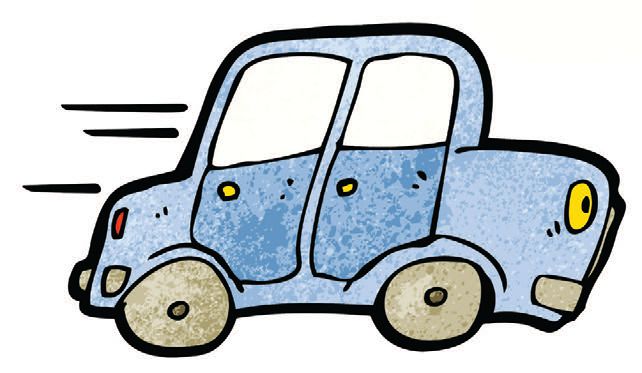‘Hey, Bud, what’s a tribologist?’
Dr. Robert M. Gresham, Contributing Editor | TLT Lubrication Fundamentals September 2013
Sound familiar? Here’s how to explain the important science with the funny name.
KEY CONCEPTS
•
Most people are unaware of the importance of tribology in their everyday lives or the huge amount of energy that could be saved.
•
A 1983 report identified six industrial 'tribological sinks' where significant amounts of lost energy could be saved by reducing friction and wear.
•
The report stated that four quadrillion BTUs of energy was lost in 1978 due to friction and wear-enough to power New York City for a year.
WE’VE ALL HAD THE EXPERIENCE. You mention the word tribology and people look at you as if you were speaking a dead language. After hearing their best guesses—usually something to do with the study of tribes or the number three—you decide to enlighten them.
This article is intended to help you offer a laymen’s explanation to the important science with the funny name. Or perhaps you can just refer this story to those who are really curious.
Tribology—what a weird word! As STLE members know, it is derived from the Greek word
tribos, which means “to rub.” Tribology is the science of surfaces that rub together— friction and wear processes. If the uninitiated ask, who cares? The answer is everyone—or at least they should be, because tribology is the science that helps keep the world moving.
Tribologists worry about the friction of an eyelid over a contact lens, the force to move a drawbridge, improving fuel efficiency in cars by reducing friction, the friction of human skin over itself (think blisters), artificial joint construction, wire ropes used in elevators and ski lifts, or how insects manage to climb walls and ceilings—the list is endless.
These kinds of problems have challenged humans since the very beginning: using friction to start a fire, lubricating chariot wheels, moving the stones that built the great pyramids. These kinds of problems are with us still. They impact every aspect of our life. Most gadgets and machines that we wholly take for granted often had serious tribology problems that had to be solved before they were useable by society. To get a perspective, let’s explore some examples from 30 years ago, as well as challenges that we have today.
INDUSTRIAL CHALLENGES
I recently had the occasion to read a 1983 report written by the Department of Energy on Energy Conversion and Utilization Technologies (ECUT). This report was important because it drove research and development direction and funding in both industry and the government for quite a number of years. The main purpose of the report was to identify six major industrial “tribological sinks” where significant lost energy could be saved through the application of tribological technologies to reduce friction and wear. This report is still relevant today because as a society we are
still striving to conserve energy and live in a more sustainable manner. But while we have made many improvements, opportunities still abound.
The report identified four quadrillion BTUs of energy lost in 1978 due to friction and wear, “enough to power New York City for a year.” That’s a number that is hard to imagine. Given the growth of the U.S. in the last 30 or so years, can you guess, even with the improvements we have made, what that number likely is now?
And the opportunities back then remain opportunities today. The six key industries are:
1.
Mining
2.
Agriculture
3.
Primary metals
4.
Chemicals/refining
5.
Pulp and paper
6.
Food processing.
Of course, the transportation sector was a given and still is.
The report’s first major conclusion is that material losses from wear are greater than energy losses from friction. This, in turn, led to the conclusion that reducing material wear losses greatly increased equipment life and reliability.
As a result, schools suddenly began offering courses in material science. At the time, ultra-thin physical vapor deposition coatings consisted of titanium nitride for class rings and cheap watches because of its attractive gold color and wear resistance. After the report was issued, the whole technology of ultra-hard, wear-resistant materials and coatings was explored based on this technology.
In the metalworking industry, it was estimated that material and friction losses incurred in all the basic operations—drilling, sawing, forming, forging, etc.—were 7.7 x 10
12 BTUs and 20.2 x 10
12 BTUs, respectively. This provided a total opportunity of 27.9 x 10
12 BTUs energy savings (about the equivalent of 4.8 million barrels of oil).
Now in the metalworking industry, cutting tools are all made from these kinds of materials or coatings, leading to longer tool life and finer, more precise machining. Even at the consumer level, drill bits, saws, dies, grinders and similar tools bought at the local hardware store now commonly utilize so-called material and surface modification technology.
Prior to the 1983 report, most tribology-related research was in the area of component development, fluid film formation, elastohydrodynamic lubrication and contact mechanics. As a result of the study, research shifted toward development of advanced tribo-materials, liquid and solid film lubricants, coatings (especially hard wear-resistant coatings), ceramics, surface modification, advanced sealing technologies and new and novel characterization and testing techniques, including computer-assisted simulation and characterization. Research on the mechanisms of friction, wear and tribochemical reactions at the atomic and subatomic level blossomed. Today we call this kind of research nanotribology.
This research also centered on how to operate at higher temperatures where many materials, coatings and lubricants begin to break down but where machines like jet engines operate more efficiently. As a further result of the report, the whole technology of proactive reliability and condition-based maintenance was birthed.
Another obvious opportunity was identified in the transportation sector. It was estimated that about 26 percent of all energy was consumed in this area or at the time about 19 x 10
15 BTUs. Much of this energy was consumed in overcoming tribological losses, material wear and friction. Mechanical inefficiency in both engine and drive train sopped up significant energy, as well as the more subtle effects of rolling friction and streamline design (or resistance friction due to air flow). Back then most cars strained to get 10 mpg, and oil had to be changed every 2,000 miles or less.
 Only 21.5 percent of fuel energy is actually used to move the car.
Only 21.5 percent of fuel energy is actually used to move the car.
After years of research and development in engine and piston design, gearing, transmissions, combustion control, streamlining, etc., even large cars can get 20-25-plus mpg and smaller cars are approaching 40 mpg—and hybrids can do even better. Oil change intervals are on the order of 7,000 miles and higher. Older folks probably have noticed that when you take your foot off the gas, cars now coast for quite a long distance. Many of these same improvements have been applied to the trucking and railroad industries.
However, the challenges in the transportation sector continue as we strive for yet better fuel efficiency. In a recent study, “Global Energy Consumption Due to Friction in Passenger Cars” by Kenneth Holmberg and Peter Andersson, both with VTT Technical Research Centre of Finland, and STLE-member Dr. Ali Erdemir, Argonne National Laboratory, Energy Systems Division, in Argonne, Ill., the authors found that a third of fuel energy is lost to friction in the engine, transmission, tires and brakes. Only 21.5 percent of the fuel energy was actually used to move the car. For perspective on the importance of these findings, 56,000 million gallons of fuel (gas and diesel) were consumed in passenger cars alone in 2009. It is estimated that frictional losses could be reduced by 18 percent in the next 5-10 years and 61 percent in the next 15-25 years. This would represent a global savings of $227 million (U.S.) and $750 million (U.S.), respectively. In terms of fuel savings, that translates into 31 million and 102 million gallons of fuel, respectively, plus a CO
2 emission reduction of 0.32 million and 1.05 million tons, respectively.
Another example has to do with wind energy, a popular topic today. However, wind turbines have some pretty major design and operation problems. Economic models all require that wind turbines operate with minimal maintenance for 20-30 years. From an investment standpoint, we are looking at a goal of a 6-7 year payback. Most turbines operate in remote locations or offshore where there is sustainable wind, and, coincidently, where maintenance is very costly.
That’s the plan. Unfortunately, the reality is that we are having maintenance problems in the 3-5 year period. The weak spot in the overall design are the gears and bearings in the gearboxes. Additionally, the design pressures on the gearboxes are toward progressively higher ratios from a current high of 30:1 to 50:1. The goal is toward less massive gearboxes as well, since current gearboxes can be larger than a Volkswagen. All this adds more and more stress on the gearbox. Clearly, this is a challenge for tribologists.
With these few examples, I hope to have illustrated for the curious the importance and significance of the tribologically oriented science community’s response to these challenges and its resultant contribution to the quality of our global society. Today, the application of tribology oriented science, technology and best practices has clear and obvious financial, environmental and sustainability impact on our society. Unfortunately, one of the big challenges is that the federal government, I suppose seeking more obvious vote-getting solutions, does not fund scientists working in the field as they have in the past.
So when a friend or acquaintance says tribology is a weird word, well, they are kind of right. But when someone asks, “Who cares?” The answer to the question really is everyone! Whether they know it or not.
 Bob Gresham is STLE’s director of professional development. You can reach him at rgresham@stle.org
Bob Gresham is STLE’s director of professional development. You can reach him at rgresham@stle.org.